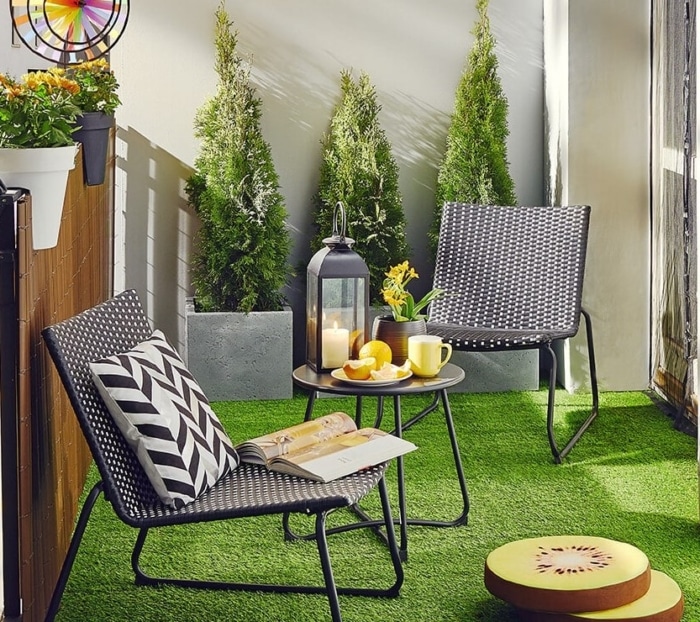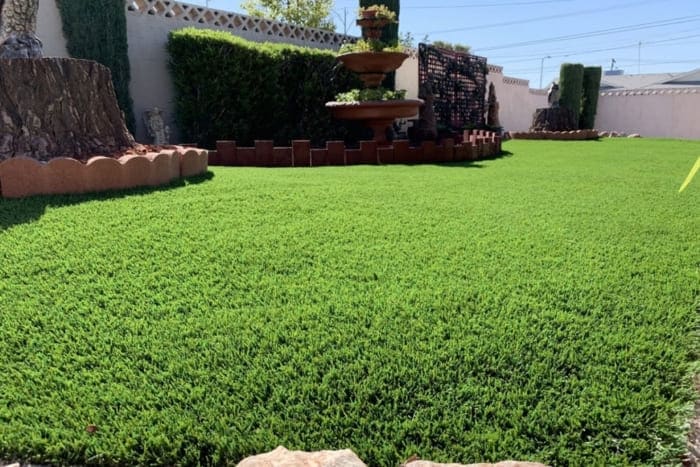How to Choose the Best Fake Grass for Balcony


You live in urban surroundings but are blessed with a balcony. These outdoor surfaces are perfect for relaxing alone and hanging out with friends. If you want to make them more attractive, how about using fake grass for the balcony?
It can be an excellent addition to your rooftop, but you need to choose a suitable turf. Check out this guide to learn how to select the best fake grass for your roof garden!
Do you own the balcony or have a license to make changes to it? First, check with the local community to ensure you aren’t breaking any regulations. As long as you aren’t violating any rule, feel free to place artificial turf on the balcony.
The main benefits of using fake grass for balconies include:
You need fake turf that will look great and last for years. It’s why you should stick to reliable suppliers and brands. Adding infill can extend the longevity of artificial grass, so make sure to choose silica stands or crushed rubber. Now, here are the features to assess to ensure the turf meets your expectations!
The texture depends on the blade’s firmness, which affects the feeling when walking over the turf. If you go with soft blades, you’ll love stepping on them. However, they aren’t as durable as hard blades. If you expect heavy traffic on your deck, pick a more rigid texture to extend the durability.
The density shows strands per sq. ft. If you go with a dense option, the turf will look more natural. Some might not even notice it’s fake. But if the density is low, it’ll be easier to figure out the grass is artificial. On the other hand, a lower density decreases the turf’s overall cost.
This refers to the height of your fake grass for patio. The usual height is around a single inch above the ground, although there are various options available. Unless you plan to play golf, this shouldn’t make much difference in how your patio looks.
You can pick from three different options:
The great thing about the artificial grass for balconies is that artificial turf requires minimal maintenance. Check out these tips to maintain it in perfect condition:
You made up your mind and acquired fake turf, and it’s now the time to install artificial grass. Here is how to get your balcony revamped by adding artificial turf to it!
It’s imperative to check the balcony and turf surfaces. As for the balcony, it’s better if the concrete is the material under the fake grass. It’s essential to even the balcony surface, which you can do by adding a foam underlay. As for the artificial turf, remove any dirt that got stuck to ensure a smooth installation.

You picked the fake grass size closest to your balcony’s dimensions. However, it will be necessary to cut the turf, which is why you should mark it first. Next, check the width and length of the area where you want to place the grass. Add several inches to have wiggle room, and mark those dimensions on the fake turf.
If you have everything ready, it’s time to unroll the fake grass. Position it to cover the area to position it. If you are working to cover large zones, you could use a helping hand. Once you lay everything out, it’s time for the next step.
You can mark the area to cut with chalk or another market. Use a utility knife or any other tool that can make adequate cuts. Try to follow the line carefully to ensure an optimal turf appearance.
If you need to join grass sections, you can use joining tape. However, glue is necessary at the edges. It ensures your fake turf stays in place. Once you finish gluing, press the turf to ensure it bonds better to the surface below.

Festival Turf
Phone: 844-702-8873
Email: [email protected]
Las Vegas HQ Hours
Monday-Friday: 8:00am – 4:00pm PST
Saturday: 8:00am – 12:00pm
Sunday: CLOSED
Have a Question?
Contact us now and we’ll help you find what you need!

 Putting Green Design Ideas: How To Build An Artificial Putting Green In Your...
Putting Green Design Ideas: How To Build An Artificial Putting Green In Your...